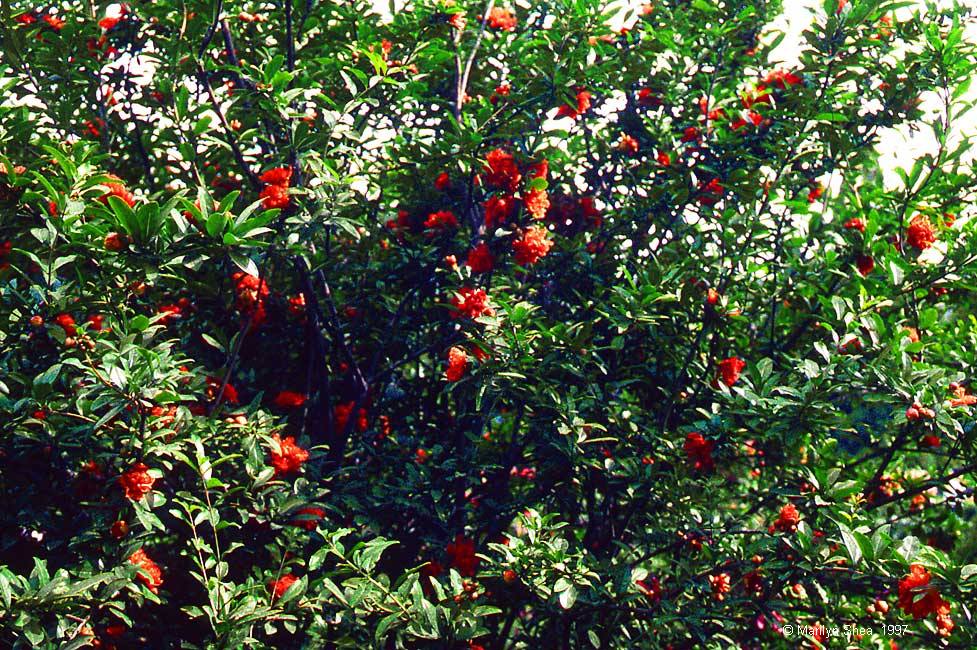 |
|
Punica granatum 石榴 The pomegranate blooms during the second half of May in Xi'an. These images were taken about two months before the images on the previous page. You can see the flower on the next page. Beresford (2010) reported the work of Dr. Jodi Barta and Dr. Tanya von Hunnis who discovered that a skeleton buried in a Roman cemetery bore maternal Han Chinese DNA. He was careful to point out that it is not known what the paternal DNA was, so we don't know if the individual had an ancestress from China or if he was a traveler from China. The skeleton dates to the 1st or 2nd century AD. This is an important find. It is known that the East and West traded along the Silk Road during the Han Dynasty, but it was long thought that the silks and other merchandise that were found in Rome and the Western items in China made their way through the chain of merchant middle-men. It is nice to see that man's itchy feet stayed consistently itchy. This guy was probably an ordinary trader, not an envoy, because he was buried in a cemetery filled with workers from the Roman emperor's estate. Beresford, James. East Asians in the Roman Empire. MINERVA, March/April 2010, VOL. 21, 2. |
http://hua.umf.maine.edu/China/xian2.html
Last
update: March 2010
© Marilyn Shea, 2010